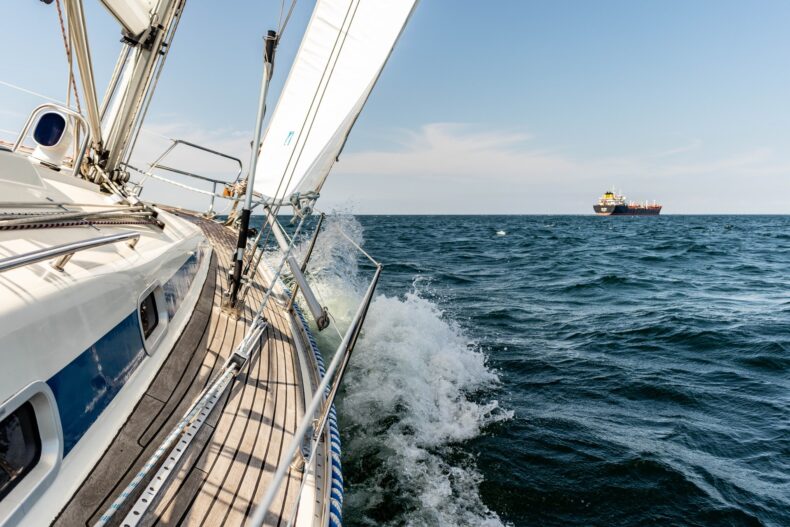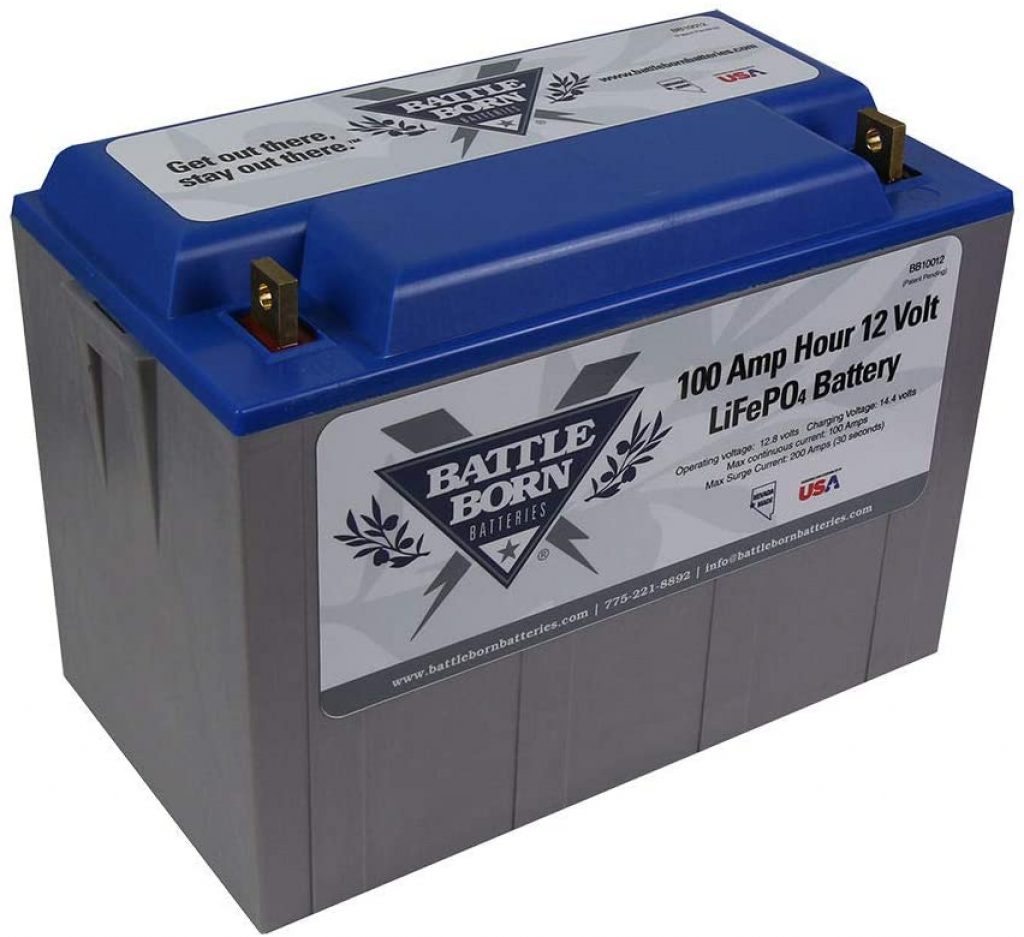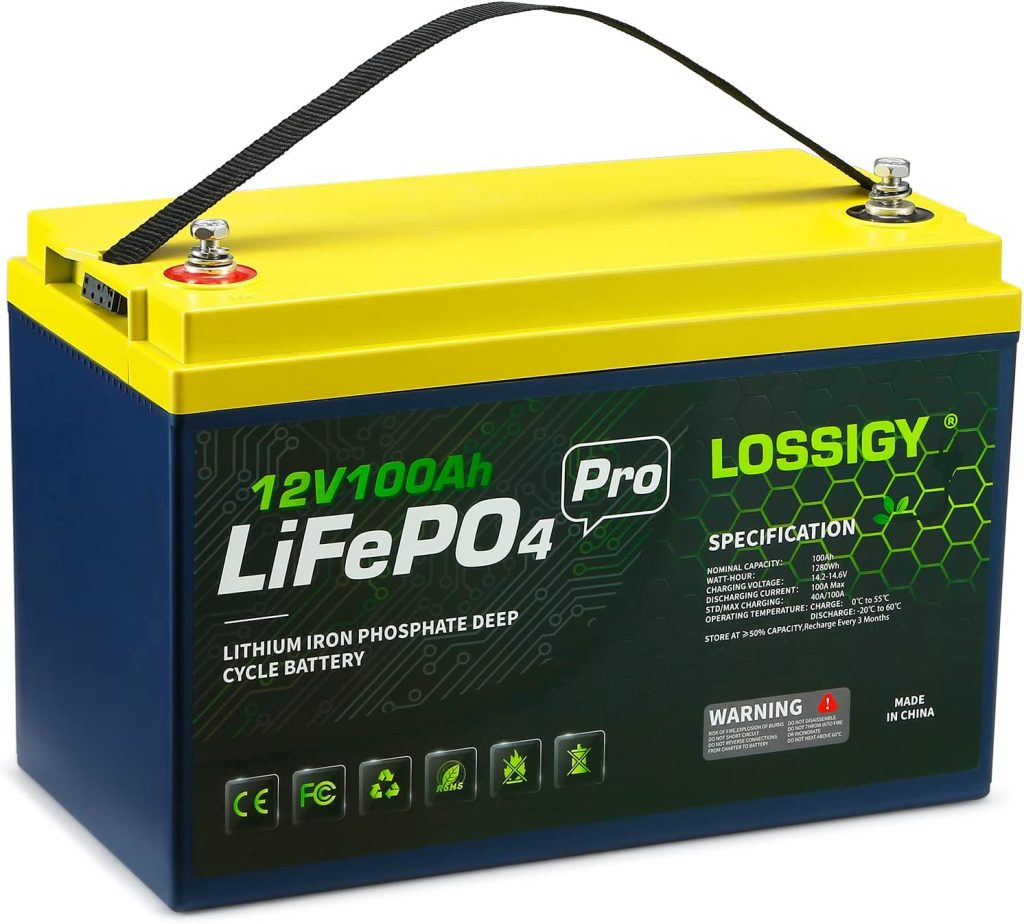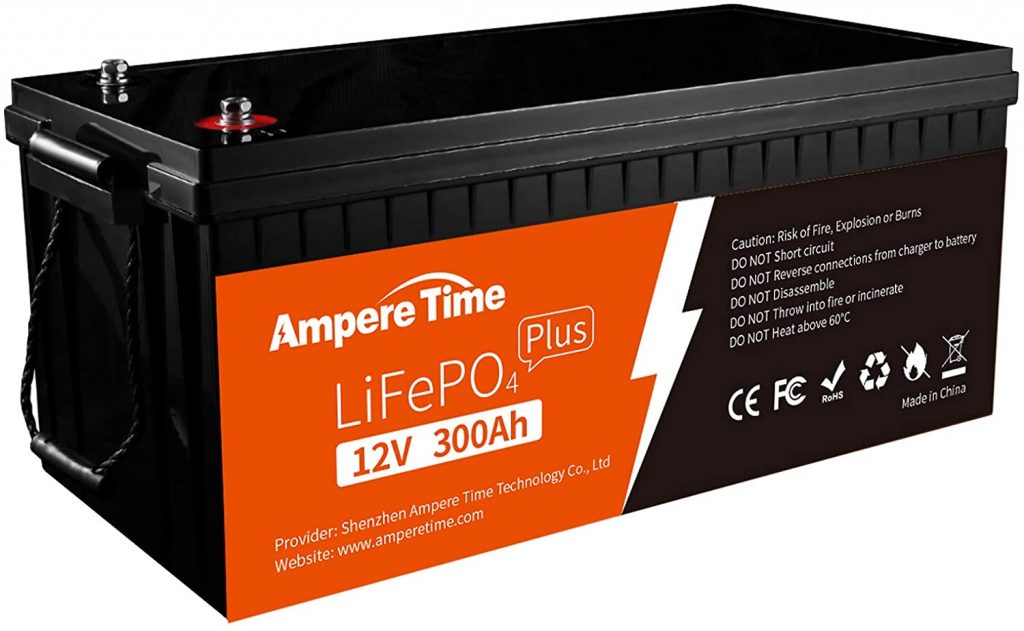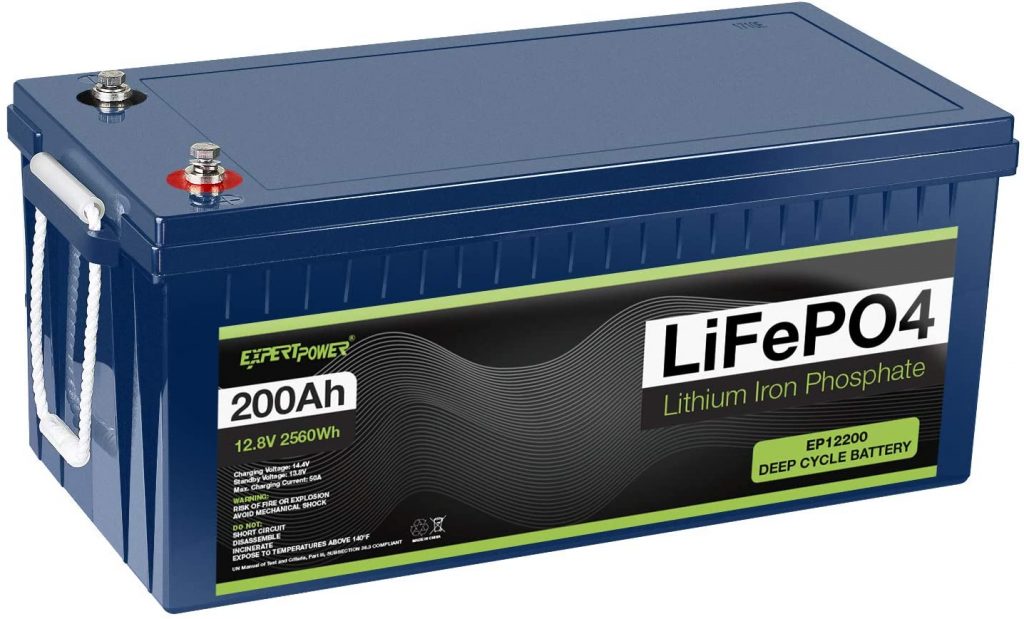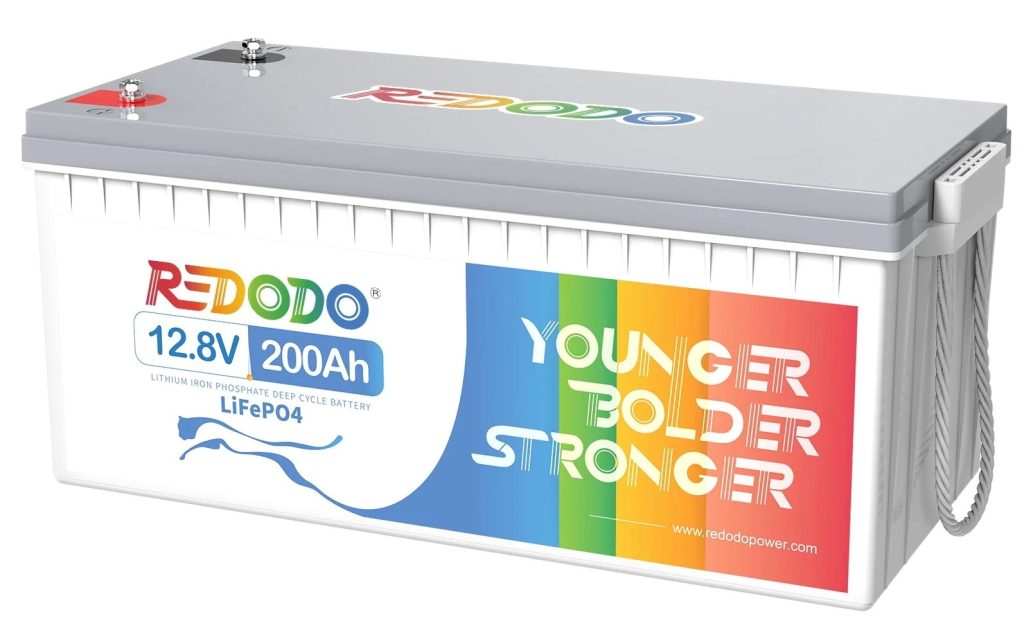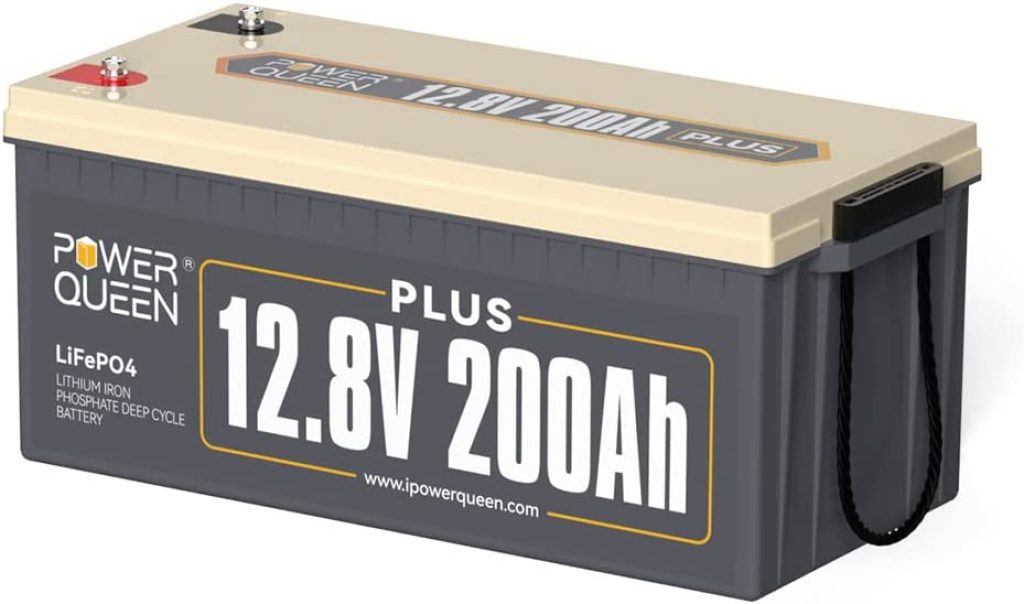Lithium batteries are now the go-to energy storage solution for your boat.
Lead-acid batteries have long been the only option for sailors to power onboard electronics, small appliances, and electric trolling motors. However, they are heavy, last a short time, and have limited storage capacity.
Thankfully, with recent developments, lithium batteries like the LiFePO4 are now perfectly fit for marine applications.
In this article, we discuss what constitutes a quality marine battery and provide you with a selection of the 10 best lithium boat batteries in 2025.
Table of Contents
How to choose a lithium marine battery
To choose the correct lithium battery for your boat, you have to consider the type of boat you have and the marine environment. Assess the following variables:
- High salt moisture content in the air.
- Temperature variations.
- Boat vibrations and movement.
- Storage time followed by intense use.
What constitutes a quality lithium battery?
In this top 10 list, you’ll find lithium batteries for boats that combine a high-quality battery management system (BMS) and battery cells.
The best lithium boat batteries possess the following characteristics:
- Corrosion resistance.
- Maintenance-free/low maintenance.
- High power output and storage capacity.
- Durability.
- Reliability.
- Long storage life.
- Tolerance to intermittent and fast charging.
What are the 10 best lithium boat batteries?
Here is our list of the 10 best lithium boat batteries in 2025:
Note to our readers: This list is in no particular order.
| Brand | Ampere Hours | Product link |
|---|---|---|
| BattleBorn | 100 Ah | View product |
| Renogy | 100 Ah | View product |
| Lossigy | 100 Ah | View product |
| Ampere Time | 300 Ah | View product |
| Expert Power | 200 Ah | View product |
| RELiON | 100 Ah | View product |
| LithiumHub | 100 Ah | View product |
| Redodo | 200 Ah | View product |
| Power Queen | 200Ah | View product |
| Dakota Lithium | 100 Ah | View product |
1. BattleBorn (100Ah)
| Discharge temp. | -4 to 140°F/ -20 to 60°C |
| Cycles | 3,000-5,000 |
| Water protection | water-resistant and splash-proof |
| Weight | 31 lbs |
| Dimensions | 12.76 x 6.86 x 8.95 in |
| Warranty | 10 years |
This lithium battery from BattleBorn is water-resistant and sealed, making it suitable for humid environments. In addition, its BMS is of the highest quality, enabling a continuous power output of 1.2kW and a 2.4kW surge.
Lifespan-wise, it outputs up to 5,000 cycles (10-15 years). Moreover, the battery will retain its charging state for months (2%-3% self-discharge rate).
Finally, it comes with a lengthy 10-year warranty.
2. Renogy (100Ah)
| Discharge temp. | -4 to 140°F/ -20 to 60°C |
| Cycles | 4000 @ 80% DOD |
| Water protection | IP54 |
| Weight | 26 lbs |
| Dimensions | 11.4 x 6.8 x 7.4 in |
| Warranty | 5 years |
Renogy’s lithium-iron battery, suitable for boats, features a high-quality BMS that efficiently controls and protects it.
The battery is ready for quick charging (600W) and benefits from IP54 protection (splashproof), making it the perfect choice for marine applications.
In addition, it’s exceptionally durable, with 4,000 cycles (10 years of use).
Finally, it has a built-in RJ45 port that monitors your battery’s parameters. This port allows you to connect several batteries in parallel for larger systems.
3. LOSSIGY (100Ah)
| Discharge temp. | -4 to 140°F/ -20 to 60°C |
| Cycles | 4,000 -7,000 |
| Water protection | IP68 |
| Weight | 24.7lbs |
| Dimensions | 12.95 x 6.69 x 8.43 in |
| Warranty | 5 years |
Lossigy’s lithium boat battery offers excellent durability — up to 7,000 cycles (10 years).
At 24.7 lbs, it possesses an exceptional energy density capacity of 1.2 kWh.
Build-wise, it’s robust enough to discharge at low and high temperatures (-4℉-140℉) and is water-resistant (IP65).
Finally, with this battery, you can easily upgrade your system by connecting up to four batteries in series or 10 in parallel.
4. Ampere Time (300Ah)
| Discharge temp. | -4 to 130°F/-20 to 54°C |
| Cycles | 4,000-15,000 |
| Water protection | IP65 |
| Weight | 62.83 lbs |
| Dimensions | 20.47 x 10.59 x 8.66 in |
| Warranty | 10 years |
We selected this lithium battery from AmpereTime for its high storage capacity (3.6kWh) and strong power output (2.4kW). It’ will’ll satisfy all your boating requirements, and you will likely never run out of electricity.
Protection-wise, it’s IP65 certified (waterproof) and resistant to temperature variations (-4°F to 130°F).
Lastly, AmpereTime states that it’ll work for 10 years with more than 4,000 cycles.
5. ExpertPower (200Ah)
| Discharge temp. | -4 to 140°F/ -20 to 60°C |
| Cycles | 2500 at 100% DOD 3600 at 80% DOD 7000 at 50% DOD |
| Water protection | N/A |
| Weight | 48.3 lbs |
| Dimensions | 20.6 x 9.5 x 8.6 (H + Terminal: 8.8) In |
| Warranty | 2 years |
Expert Power is a U.S.-based company. Their latest offering combines high storage capacity (2.4kWh) and power (1.8kW) for demanding applications.
Thanks to its low self-discharge rate, you can store it for a year and maintain 75% of its initial capacity, making it perfect for those who only use your boats once in a while.
6. RELiON (100Ah)
| Discharge temp. | -4 to 140 ºF/-20 to 60 ºC |
| Cycles | minimum of 3500 cycles at 80% DOD |
| Water protection | IP67 |
| Weight | 27.9 lbs |
| Dimensions | 13 x 6.8 x 8.4 in |
| Warranty | 10 years |
The RB100-LT is a 12V 100Ah LiFePO4 battery part of RELiON’s Low-Temperature Series.
This battery is specially designed for cold weather performance — you can safely charge it at temperatures as low as -20°C (-4°F) using a standard charger.
This model comes with an improved IP67 ingress protection rating that completely repels dust and resists water for up to 30 minutes at a depth of one meter.
The heating and charging process with this LT series battery is seamless. Plug your battery into a standard lithium charger, and its internal monitoring and heating system will take over.
However, the charging process will take a bit longer in below-freezing temperatures as it takes time to heat the cells.
7. LithiumHub (100Ah)
| Discharge temp. | -4 to 140 ºF/-20 to 60 ºC |
| Cycles | 3,000 @ 80% DOD |
| Water protection | IP55 |
| Weight | 28 lbs |
| Dimensions | 12.55 x 6.5 x 9.2 in |
| Warranty | 11 years |
Next on our list is LithiumHubs Ionic, 100Ah LiFePO4 offering. This model weighs 70% less than most lead-acid batteries, requires zero maintenance, and has a cycle life of 3,000-5,000 cycles.
Temperature-wise, this battery can handle discharge temperatures of -4 to 140 ºF (-20 to 60 ºC) and charging temperatures of 32 to 113 ºF (0 degrees to 45 degrees ºC).
Finally, and most impressive of all, LithiumHubs provides an exceptional 11-year warranty upon purchase — the longest on our list.
8. Redodo (200Ah)
| Discharge temp. | -4 to 140 ºF/-20 to 60 ºC |
| Cycles | 4,000 @ 100% DOD 6,000 @ 80% DOD 15,000 @ 60% DOD |
| Water protection | IP65 |
| Weight | 45.8 lbs |
| Dimensions | 21 x 8.2 x 8.5 in |
| Warranty | 5 years |
Redodo’s 200Ah LiFePO4 battery offers one of the best performance-to-price ratios. It stores up to 2560Wh and delivers 1280W of power for demanding loads.
Moreover, it’s very durable, with its cycle life being as follows:
- 4,000 @ 100% DOD
- 6,000 @ 80% DOD
- 15,000 @ 60% DOD
Expansion-wise, the battery can support the following:
- Series: Up to 4 identical batteries to create a 51.2V, 200Ah system.
- Parallel: Up to 4 identical batteries to create a 12.8V, 800Ah system.
Finally, it comes with a 5-year warranty and a robust built-in BMS to protect and control your battery’s cells.
9. Power Queen (200Ah)
| Discharge temp. | 4 to 140 ºF/-20 to 60 ºC |
| Cycles | 4000+ |
| Water protection | IP65 |
| Weight | 48.58 lbs |
| Dimensions | 20.94 x 8.46 x 8.14 in |
| Warranty | 5 years |
Power Queens 200Ah battery will cover most of your energy needs on your boat thanks to its large 2,560 Wh storage capacity and continuous power output.
This battery operates safely at extreme temperatures — between -4°F and 140°F. Additionally, thanks to its waterproof certification (IP65), it’s designed to work in high-humidity environments.
Finally, the battery possesses impressive durability (4,000 cycles) and comes with a 5-year warranty and a 24-hour technical support service.
Related reading: Power Queen 12.8V 100Ah LifePO4 Battery Review
10. Dakota Lithium (100Ah)
| Discharge temp. | -20 to 120ºF/-29 to 49ºC. |
| Cycles | 2,000 |
| Water protection | N/A |
| Weight | 31.9 lbs |
| Dimensions | 12.99 x 6.77 x 8.66 in |
| Warranty | 11 years |
With a power output of 1.2kW and a capacity of 1.2kWh, the Dakota Lithium battery is well-suited for trolling motors, boat electronics, and onboard appliances.
It can power a 30 lb trolling motor on a single charge for around 12 hours.
Operation-wise, it functions well when connected to a solar charge controller.
If your solar panels are powerful enough, the battery can reach full charge in less than 2 hours — pretty impressive!
In terms of durability, it can survive more than 2,000 cycles and ties with LithiumHub for the longest warranty.
How long do lithium boat batteries last?
Lithium marine batteries can last approximately 10-15 years, depending on how frequently you discharge them.
Our research discovered that most brands produce batteries capable of discharging 2,000-5,000 times.
Ultimately, we recommend choosing a marine battery with a higher discharge/life cycle rate depth. This will allow it to last much longer while at sea.
Out of all the lithium boat batteries we tested, the 100Ah battery from BattleBorn and Dakota Lithium lasts the longest.
Are lithium batteries safe to use on boats?
A lithium-ion battery fire onboard a ship can be just as deadly as a sinking ship. This is because a lithium-ion battery fire is very challenging to extinguish compared to traditional seafaring fires. Additionally, most ships do not have the appropriate fire suppressor systems.
Thankfully, the latest lithium boat batteries can withstand the ocean’s turbulence more efficiently and come with water-resistant casing. Additionally, their internal BMS systems are becoming highly advanced.
In 2022, the safest marine lithium battery was the LiLead 12V, 100Ah — certified fireproof (UL-94).
Is a lithium boat battery worth the cost?
Let’s put it this way, traditional sealed lead acid batteries last 3-5 years. What’s more, you can only discharge them up to 50%. As such, you’ll need to buy double the lead-acid batteries to compensate for the DOP. Naturally, this increases the overall weight and affects the total price.
For example, let’s say you want 100Ah of capacity onboard your boat.
- You’ll need to buy two 100Ah batteries if you get a lead-acid battery. This will cost you about $360. However, you’ll need to replace these batteries approximately every three years. Therefore, over 10 years, you’ll have spent $1200.
- If you go the lithium route, you’ll only need one 100Ah battery, lasting 10-15 years. The total cost for this one battery is around $300-$900.
Ultimately, a lithium boat battery is up to four times cheaper over its lifetime than a traditional lead-acid battery (AGM and GEL).
Can you charge a lithium boat battery with a boat alternator?
The most common way of charging a lithium marine battery is with the boat alternator.
The alternator is a mini-power generator whose primary function is to supply electrical current to the starter battery (also called the primary battery) when the engine is running.
As a result, the battery can start the engine and power essential small loads, such as lights and radio. Usually, starter batteries are AGM lead-acid batteries.
Alternators deliver up to 200 Amps and can charge 12V batteries — they are ideally suited for lithium battery charging.
Adding a secondary lithium battery (also called a house battery or auxiliary battery) is necessary to spare your starter battery from being depleted and damaged when the engine is not running.
What do you need to charge a lithium boat battery with an alternator?
Be cautious when charging your lithium battery with the boat alternator. You want to charge your battery appropriately. Also, it would be best to keep the starter battery full at all times.
As discussed in our dedicated article, you cannot directly connect your lithium battery in parallel with the starter battery. If you do, you’ll risk discharging the starter battery into the house battery. You want to avoid this as you may be unable to start your engine.
Luckily, two systems can assist you with charging/discharging your two (or more) batteries through the alternator:
- Battery isolator.
- Battery separator.
Let’s have a closer look at these two electronic devices:
Battery isolator to charge a lithium boat battery
A battery isolator isolates the two batteries — the starter battery and auxiliary battery — from each other.
The current flows in one direction, from the alternator to the batteries — there is no current flow between the starter and house batteries.
Some systems, like the Orion-Tr Smart DC-DC charger from VICTRON, include a smart DC charger that regulates the charging voltage to meet the charging profile of a lithium battery.
Battery separator to charge a lithium boat battery
You can view the battery separator as a “smart battery isolator.” It monitors the voltage of both the starter and house batteries and switches between them if the system needs it to do so.
For example, upon starting the engine, if it detects that the starter battery has a low voltage — or at least not enough to start the engine properly — it’ll allow the house battery to assist the starter battery.
It’ll always prioritize the starter battery over the house battery in charging mode.
Perhaps, the fascinating feature — and the main difference with a battery isolator — is that it charges the two batteries from multiple sources.
Here’s an example of a battery separator by DEFA.
Ultimately, if you have a secondary charging source on board, we recommend the battery separator over the battery isolator.
Final thoughts
Some food for thought: according to the IMO (International Maritime Organization), the amount of carbon dioxide emissions from international shipping represented 2.2% of global human-made emissions in 2012.
This number is expected to rise from 50 – 250% by 2050 if no action is taken. Thankfully, the industry is slowly switching to Li-Ion technology, which helps contribute to greener shipping.
As for commercial boatmen, if you’re looking for a quality lithium boat battery to power your onboard appliances and electronics or for your electric trolling motor, you need a light, durable, robust, maintenance-free, and reliable battery.
You can expect this from the lithium batteries in our top 10 list.
Over the last 3 years, the price of lithium batteries has decreased while their durability has increased. Now is the perfect time to replace your old lead-acid boat battery with lithium.

